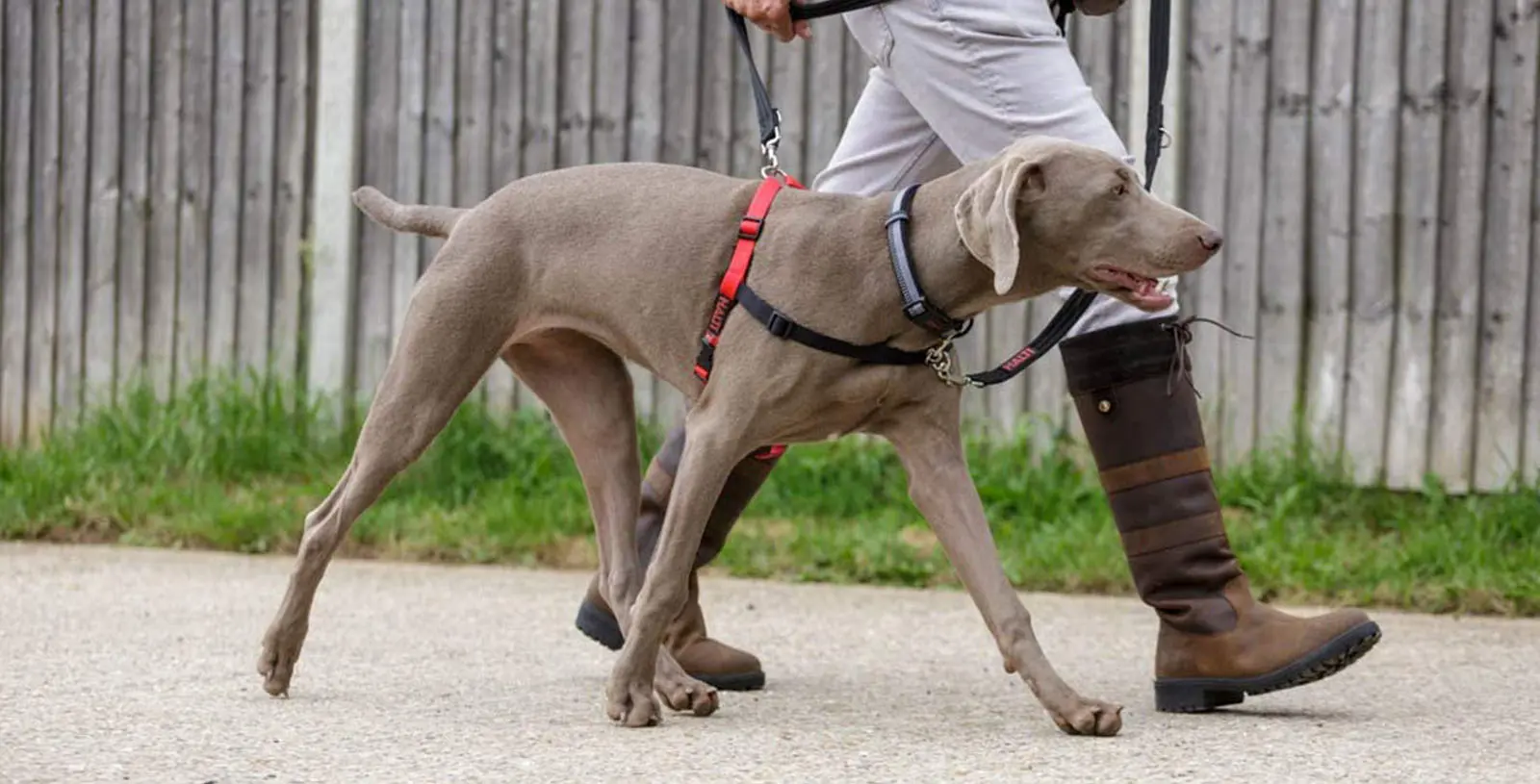Embarking on a leisurely walk with your four-legged friend can be one of life’s simple pleasures, fostering a strong bond between you and your canine companion. However, for dog owners grappling with the challenge of a spirited pup that incessantly pulls on the leash, this pleasant activity can quickly turn into a frustrating ordeal. Traditional collars and harnesses may inadvertently encourage pulling and, in some cases, pose a risk of injury to the dog’s neck.
Fortunately, the pet industry has responded to this common concern with an innovative solution – the no-pull dog harness.
No-pull harnesses are specifically designed to provide dog owners with a humane and effective means of controlling their pet’s movements during walks. This transformative gear has gained popularity for its ability to address pulling behavior without causing discomfort or harm to the dog.
In this comprehensive guide, we will delve into the key features, benefits, and some of the best options available in the realm of no-pull dog harnesses, empowering dog owners to make informed choices for the well-being and enjoyment of their furry friends.
Key Features of No-Pull Dog Harnesses:
Front-Attachment Design:
No-pull harnesses often incorporate a front-attachment point, typically located on the chest. This strategic placement helps redirect a dog’s attention toward the owner when they attempt to pull. By discouraging forward movement, this design encourages a more controlled and enjoyable walking experience.
Adjustability:
The best no-pull harnesses prioritize adaptability to accommodate dogs of various sizes and shapes. Multiple points of adjustment, such as straps around the chest and belly, ensure a secure and customized fit. Proper adjustability enhances both the harness’s effectiveness and the dog’s comfort during walks.
Padding and Comfort:
Comfort is paramount when selecting a no-pull harness. Quality options feature padding along critical areas, such as the chest and belly, to prevent chafing or discomfort. This additional padding ensures that the harness remains comfortable for the dog, even during extended wear.
Durable Materials:
Given the active nature of dogs, especially those prone to pulling, durability is crucial. Top-rated no-pull harnesses are constructed from robust materials such as nylon or polyester, with reinforced stitching to withstand the forces exerted during walks. This durability not only ensures the longevity of the harness but also contributes to the safety and security of the dog.
Easy to Put On and Take Off:
Convenience is a key factor for dog owners, and the best no-pull harnesses are designed with this in mind. Features like quick-snap buckles and straightforward design make the harness easy to put on and take off, streamlining the process of gearing up for a walk and contributing to a positive overall experience.
Reflective Elements:
Many high-quality no-pull harnesses incorporate reflective elements into their design. These reflective features enhance visibility during low-light conditions, such as early mornings or evenings, providing an added layer of safety for both the dog and the owner during walks.
Dual-Clip Options:
Some advanced no-pull harnesses offer dual-clip options, allowing for attachment points both on the front and back. This versatility enables owners to choose the best configuration based on their dog’s behavior and training needs. Front attachment points discourage pulling, while back attachment points can be used for casual walks.
Martingale Loop:
A Martingale loop is a valuable addition to certain no-pull harnesses. Positioned on the back, this loop tightens gently when the dog pulls, discouraging the behavior without causing discomfort. It serves as an effective training aid to redirect the dog’s focus toward the owner.
Conclusion:
No-pull dog harnesses provide an effective and humane way to manage your dog’s pulling behavior during walks. When choosing the best harness for your furry companion, consider factors such as design, adjustability, comfort, and durability. The options mentioned above are just a few examples of highly regarded products in the market, but it’s crucial to select the one that best suits your dog’s size, breed, and walking habits. With the right no-pull harness, you can transform your walks into enjoyable and stress-free experiences for both you and your canine companion.
FAQs
Q1: How does a no-pull dog harness work?
A1: No-pull harnesses typically feature a front-attachment point on the chest, redirecting a dog’s attention towards the owner when they attempt to pull. This design discourages pulling behavior in a more humane and effective manner than traditional collars.
Q2: Are no-pull harnesses suitable for all dog breeds?
A2: Yes, many no-pull harnesses are designed with adjustable straps to accommodate various sizes and breeds. It’s essential to choose a harness that fits your dog properly for both effectiveness and comfort.
Q3: Can a no-pull harness be used for training purposes?
A3: Yes, no-pull harnesses can be effective training tools. The front-attachment design helps redirect a dog’s focus, making it easier for owners to reinforce positive walking behaviors.
Q4: Are no-pull harnesses safe for my dog?
A4: Yes, when used correctly, no-pull harnesses are generally safe for dogs. Ensure proper fit and follow the manufacturer’s guidelines for usage. Avoid leaving the harness on for extended periods when not walking.
Q5: How do I measure my dog for a no-pull harness?
A5: Measure your dog’s girth (the widest part of the chest behind the front legs) and neck circumference. Refer to the manufacturer’s sizing guide to select the appropriate size for your dog.
Q6: Can I use a no-pull harness for a puppy?
A6: Yes, many no-pull harnesses are suitable for puppies. Ensure the harness is adjustable and choose a size that allows for growth. Consult the product specifications for any age or weight recommendations.
Q7: Are there different types of no-pull harnesses?
A7: Yes, there are various types, including front-attachment harnesses, dual-clip options, and those with Martingale loops. Each type serves specific purposes, so choose based on your dog’s behavior and your training goals.
Q8: How do I clean and maintain a no-pull harness?
A8: Follow the manufacturer’s cleaning instructions, typically involving handwashing with mild detergent. Regularly check for any signs of wear or damage, and replace the harness if needed to ensure continued safety and effectiveness.

Jane Doe, a veterinarian with over 10 years of experience, combines her deep knowledge of animal health with a passion for pet welfare at PetsPonder.com. With a DVM degree and a commitment to the latest in veterinary science, Jane Doe offers reliable, compassionate advice to help pet owners make informed decisions for their furry companions.

Leave a Reply